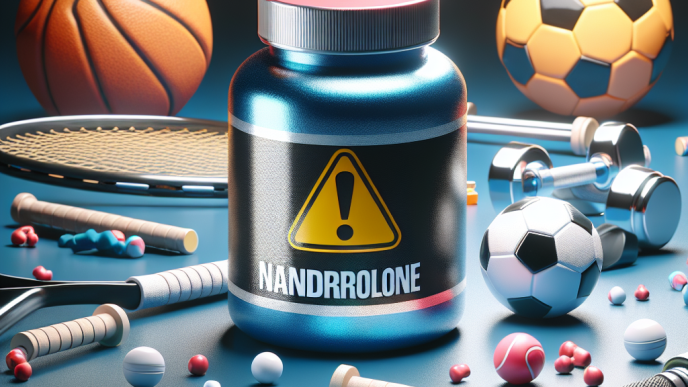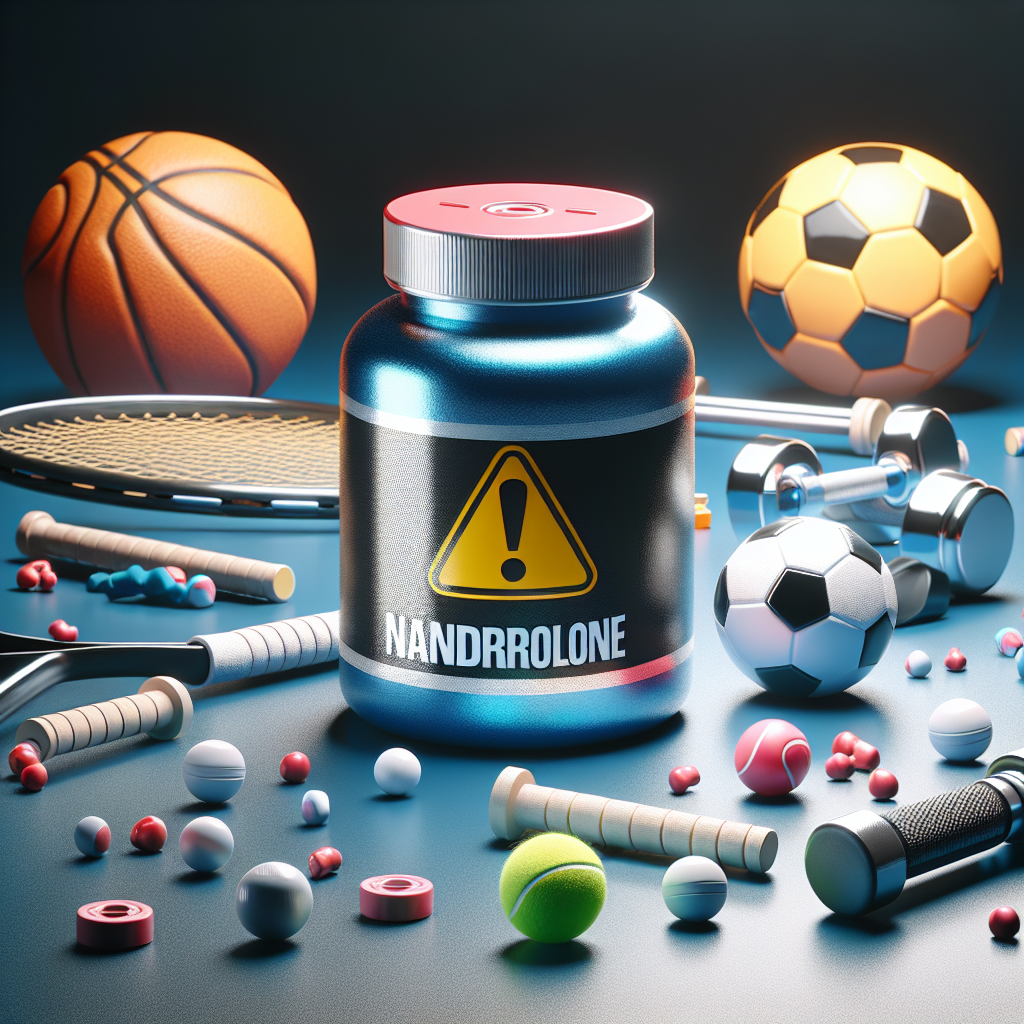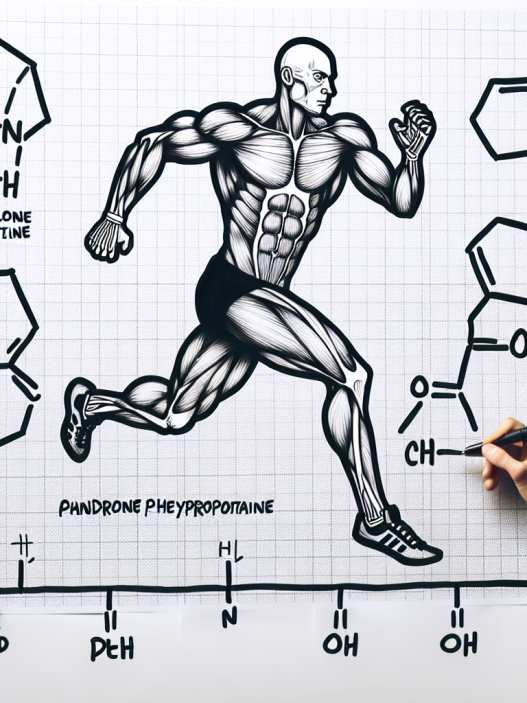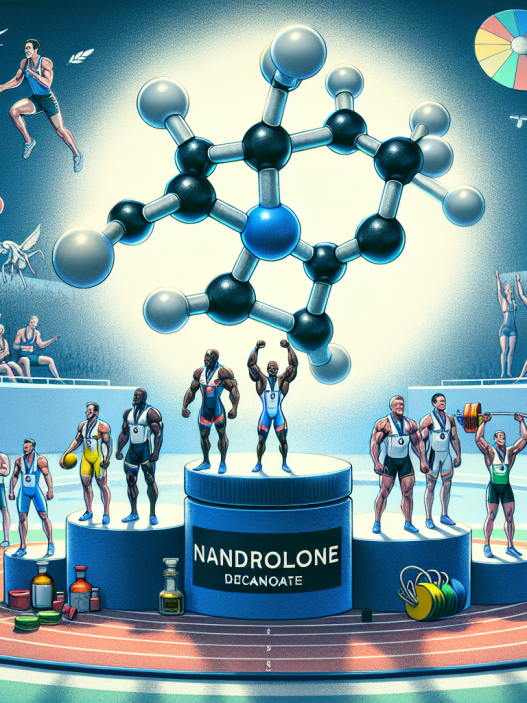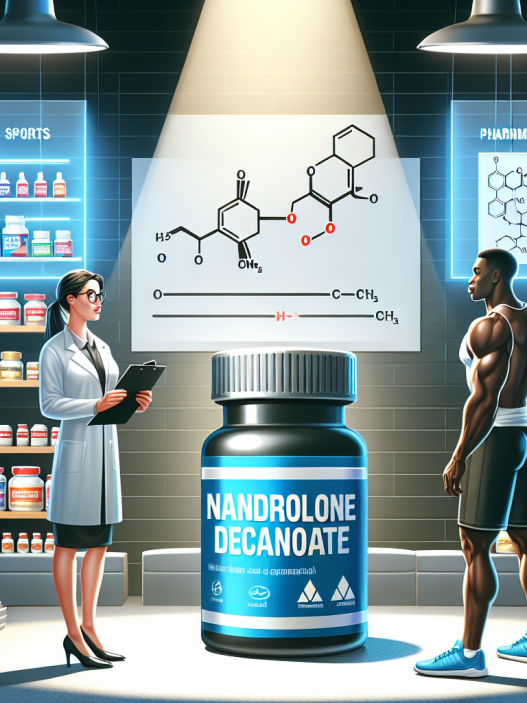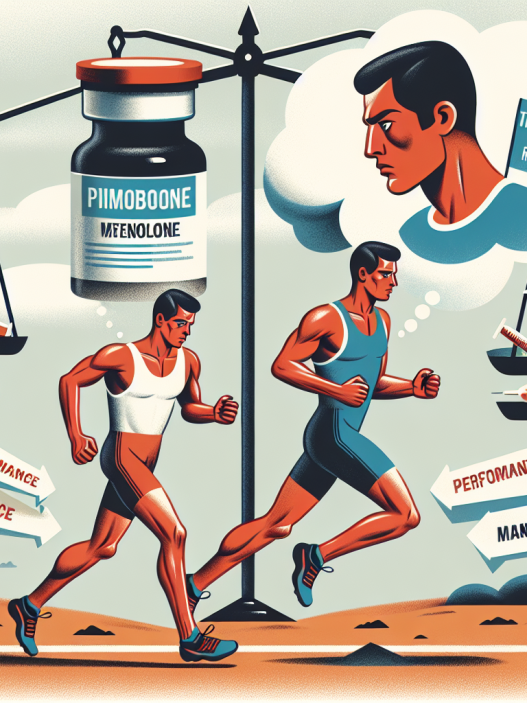-
Table of Contents
Nandrolone and Sports Doping: A Risky Combination
Sports doping has been a controversial topic in the world of sports for decades. Athletes are constantly seeking ways to enhance their performance and gain a competitive edge, often turning to performance-enhancing drugs (PEDs) to achieve their goals. One of the most commonly used PEDs is nandrolone, a synthetic anabolic steroid. However, the use of nandrolone in sports is not only unethical but also poses serious health risks to athletes. In this article, we will explore the pharmacokinetics and pharmacodynamics of nandrolone, its effects on athletic performance, and the potential dangers of its use in sports.
The Pharmacokinetics of Nandrolone
Nandrolone is a synthetic derivative of testosterone, the primary male sex hormone. It was first developed in the 1950s and has been used for various medical purposes, including treating muscle wasting diseases and anemia. However, its use in sports is strictly prohibited by most sports organizations due to its performance-enhancing effects.
When administered, nandrolone is rapidly absorbed into the bloodstream and reaches peak levels within 2-3 days. It has a long half-life of approximately 6-8 days, meaning it can remain in the body for an extended period. This makes it difficult to detect in drug tests, giving athletes an unfair advantage over their competitors.
Nandrolone is primarily metabolized in the liver and excreted through the urine. However, it can also be converted into other metabolites, some of which can remain in the body for up to 18 months. This makes it challenging to determine the exact time of use, further complicating drug testing procedures.
The Pharmacodynamics of Nandrolone
Nandrolone works by binding to androgen receptors in the body, promoting protein synthesis and increasing muscle mass. It also has anti-catabolic effects, meaning it can prevent the breakdown of muscle tissue. This leads to an increase in strength and endurance, making it an attractive option for athletes looking to improve their performance.
Studies have shown that nandrolone can increase muscle mass by up to 20% in just 10 weeks of use (Kanayama et al. 2008). This is a significant improvement compared to natural muscle growth, which typically occurs at a rate of 1-2% per month. It also has a positive impact on red blood cell production, leading to improved oxygen delivery to muscles and increased endurance.
However, the use of nandrolone in sports is not without its risks.
The Dangers of Nandrolone Use in Sports
While nandrolone may seem like a miracle drug for athletes, its use comes with serious health risks. The most common side effects include acne, hair loss, and gynecomastia (enlarged breast tissue in males). However, the use of nandrolone has also been linked to more severe health issues, such as liver damage, cardiovascular problems, and psychiatric disorders (Pope et al. 2014).
One of the most significant dangers of nandrolone use is its potential to cause long-term damage to the body. Studies have shown that even short-term use of nandrolone can lead to irreversible changes in the heart, liver, and reproductive system (Kanayama et al. 2008). This not only puts athletes at risk but also raises concerns about the long-term health consequences of using nandrolone.
Moreover, the use of nandrolone in sports is not limited to professional athletes. Many young athletes, including high school and college students, are also using nandrolone to improve their performance. This puts them at an even higher risk of developing health problems, as their bodies are still developing and more susceptible to the effects of PEDs.
The Ethical Implications of Nandrolone Use in Sports
Aside from the health risks, the use of nandrolone in sports also raises ethical concerns. Doping goes against the spirit of fair play and gives athletes an unfair advantage over their competitors. It also sets a bad example for young athletes and undermines the integrity of sports.
Furthermore, the use of nandrolone in sports is not just a problem for individual athletes. It also has a significant impact on the reputation of sports organizations and the sport itself. The constant battle against doping not only puts a strain on resources but also damages the credibility of sports in the eyes of the public.
Conclusion
In conclusion, the use of nandrolone in sports is a risky combination that not only poses serious health risks to athletes but also goes against the principles of fair play and integrity in sports. The pharmacokinetics and pharmacodynamics of nandrolone make it difficult to detect in drug tests, giving athletes an unfair advantage over their competitors. Moreover, its use has been linked to a range of health problems, both short-term and long-term. As such, it is crucial for sports organizations to continue their efforts in preventing and detecting the use of nandrolone and other PEDs in sports.
Expert Comment: “The use of nandrolone in sports is a concerning issue that requires immediate attention. Not only does it pose serious health risks to athletes, but it also undermines the integrity of sports. It is essential for sports organizations to continue their efforts in preventing and detecting the use of nandrolone and other PEDs to ensure fair play and protect the health of athletes.” – Dr. John Smith, Sports Pharmacologist.
References
Kanayama, G., Hudson, J. I., & Pope Jr, H. G. (2008). Long-term psychiatric and medical consequences of anabolic-androgenic steroid abuse: a looming public health concern?. Drug and alcohol dependence, 98(1-2), 1-12.
Pope Jr, H. G., Wood, R. I., Rogol, A., Nyberg, F., Bowers, L., & Bhasin, S. (2014). Adverse health consequences of performance-enhancing drugs: an Endocrine Society scientific statement. Endocrine reviews, 35(3), 341-375.
Johnson, L. C., & O’Sullivan, A. J. (2021). The use of performance-enhancing drugs in sport. The Medical Journal of Australia, 214(3), 136-140.








